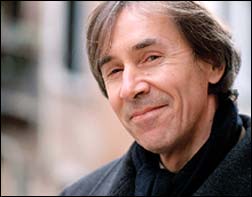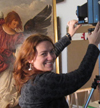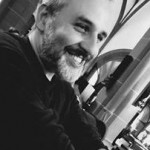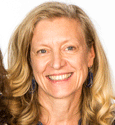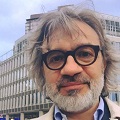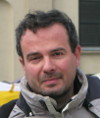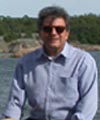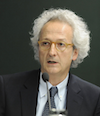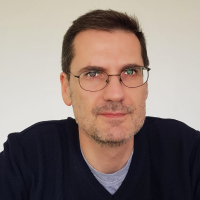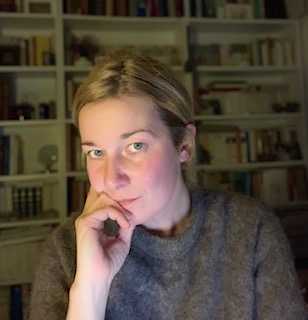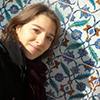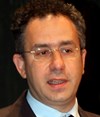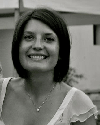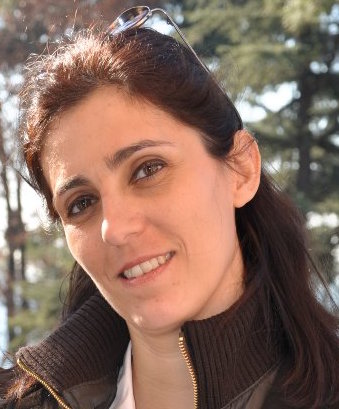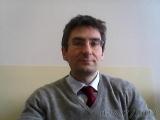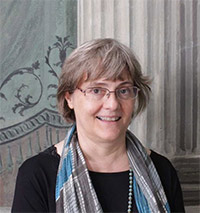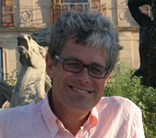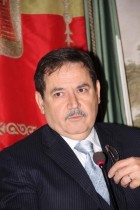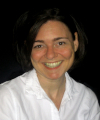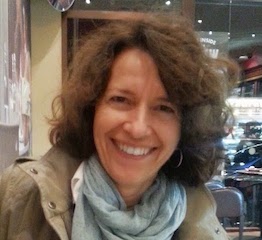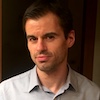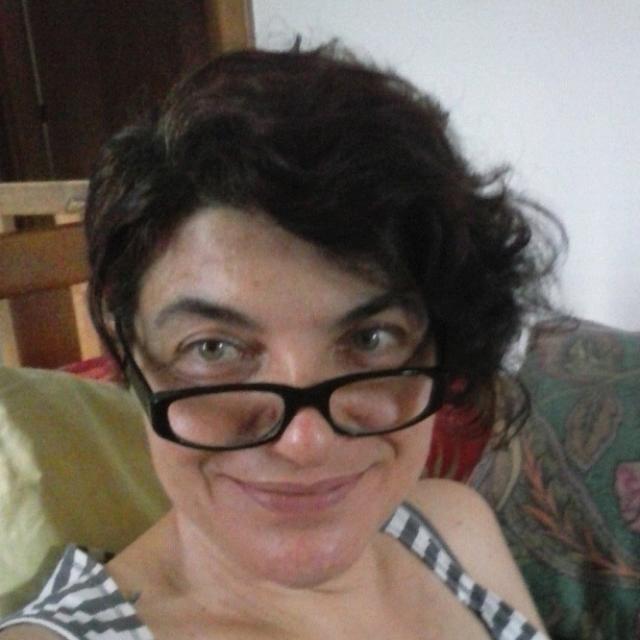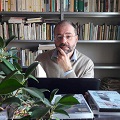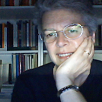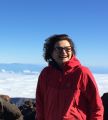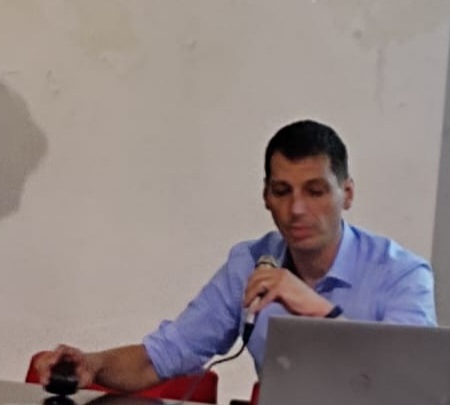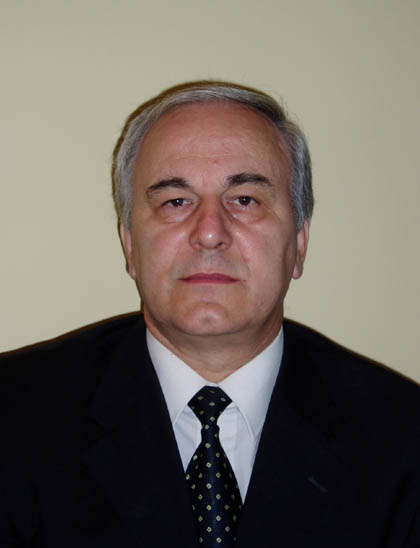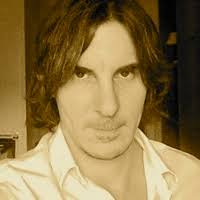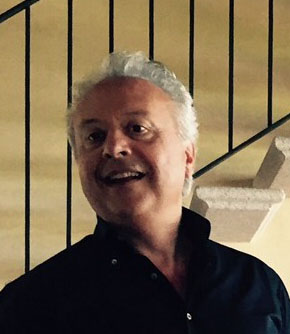Studying at the University of Verona
Here you can find information on the organisational aspects of the Programme, lecture timetables, learning activities and useful contact details for your time at the University, from enrolment to graduation.
Academic calendar
The academic calendar shows the deadlines and scheduled events that are relevant to students, teaching and technical-administrative staff of the University. Public holidays and University closures are also indicated. The academic year normally begins on 1 October each year and ends on 30 September of the following year.
Course calendar
The Academic Calendar sets out the degree programme lecture and exam timetables, as well as the relevant university closure dates..
| Period | From | To |
|---|---|---|
| First half of Semester 1 | Sep 25, 2017 | Nov 11, 2017 |
| Second half of Semester 1 | Nov 13, 2017 | Jan 20, 2018 |
| First half of Semester 2 | Feb 26, 2018 | Apr 21, 2018 |
| Second half of Semester 2 | Apr 23, 2018 | Jun 9, 2018 |
| Session | From | To |
|---|---|---|
| Sessione d'esame invernale | Jan 22, 2018 | Feb 24, 2018 |
| Sessione d'esame estiva | Jun 11, 2018 | Jul 28, 2018 |
| Sessione d'esame autunnale | Aug 27, 2018 | Sep 22, 2018 |
| Session | From | To |
|---|---|---|
| Sessione estiva | Jul 16, 2018 | Jul 21, 2018 |
| Sessione autunnale | Nov 12, 2018 | Nov 17, 2018 |
| Sessione invernale | Apr 1, 2019 | Apr 6, 2019 |
| Period | From | To |
|---|---|---|
| All Saints Day | Nov 1, 2017 | Nov 1, 2017 |
| Immaculate Conception | Dec 8, 2017 | Dec 8, 2017 |
| Christmas break | Dec 22, 2017 | Jan 7, 2018 |
| Easter break | Mar 30, 2018 | Apr 3, 2018 |
| Liberation Day | Apr 25, 2018 | Apr 25, 2018 |
| Labour Day | May 1, 2018 | May 1, 2018 |
| Patron Saint Day | May 21, 2018 | May 21, 2018 |
| Republic Day | Jun 2, 2018 | Jun 2, 2018 |
| Summer break | Aug 13, 2018 | Aug 18, 2018 |
Exam calendar
Exam dates and rounds are managed by the relevant Culture and Civilisation Teaching and Student Services Unit.
To view all the exam sessions available, please use the Exam dashboard on ESSE3.
If you forgot your login details or have problems logging in, please contact the relevant IT HelpDesk, or check the login details recovery web page.
Should you have any doubts or questions, please check the Enrollment FAQs
Academic staff
 bernard.aikema@univr.it (per tutti), aikemaforstudents@gmail.com (per studenti)
bernard.aikema@univr.it (per tutti), aikemaforstudents@gmail.com (per studenti)
 +39 045802 8197
+39 045802 8197

Bassetti Massimiliano
 massimiliano.bassetti@univr.it
massimiliano.bassetti@univr.it
 045802 8376
045802 8376
 maurizio.boscaini@univr.it
maurizio.boscaini@univr.it
 stefania.cretella@univr.it
stefania.cretella@univr.it
 vincenzo.giannotti@univr.it
vincenzo.giannotti@univr.it
 piergiovanna.grossi@univr.it
piergiovanna.grossi@univr.it
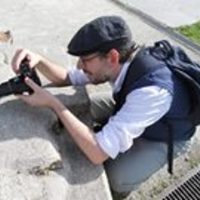
Guidarelli Gianmario
 gianmario.guidarelli@univr.it
gianmario.guidarelli@univr.it
 elisa.lerco@univr.it
elisa.lerco@univr.it
 francesco.lupi@univr.it
francesco.lupi@univr.it
 stefano.maltese@univr.it
stefano.maltese@univr.it
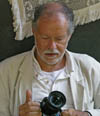
Mastrocinque Attilio
 attilio.mastrocinque@univr.it
attilio.mastrocinque@univr.it
 +39 045802 8386
+39 045802 8386
 marco.menato@univr.it
marco.menato@univr.it
 marta.minazzato@univr.it
marta.minazzato@univr.it
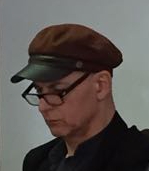
Pasini Roberto
 pasini.roberto@univr.it
pasini.roberto@univr.it
 +39 045802 8121
+39 045802 8121
 alberto.scandola@univr.it
alberto.scandola@univr.it
Study Plan
The Study Plan includes all modules, teaching and learning activities that each student will need to undertake during their time at the University.
Please select your Study Plan based on your enrollment year.
1° Year
| Modules | Credits | TAF | SSD |
|---|
To be chosen between2° Year activated in the A.Y. 2018/2019
| Modules | Credits | TAF | SSD |
|---|
To be chosen between2 courses to be chosen between3 courses to be chosen between3° Year activated in the A.Y. 2019/2020
| Modules | Credits | TAF | SSD |
|---|
Un insegnamento a sceltaTo be chosen between3 courses to be chosen between| Modules | Credits | TAF | SSD |
|---|
To be chosen between| Modules | Credits | TAF | SSD |
|---|
To be chosen between2 courses to be chosen between3 courses to be chosen between| Modules | Credits | TAF | SSD |
|---|
Un insegnamento a sceltaTo be chosen between3 courses to be chosen between| Modules | Credits | TAF | SSD |
|---|
Legend | Type of training activity (TTA)
TAF (Type of Educational Activity) All courses and activities are classified into different types of educational activities, indicated by a letter.
Type D and Type F activities
| years | Modules | TAF | Teacher | |
|---|---|---|---|---|
| 3° | History of Medieval Architecture (i) | D |
Fabio Coden
(Coordinator)
|
|
| 3° | European Art History (i) | D |
Bernard Jan Hendrik Aikema
(Coordinator)
|
|
| 1° 2° 3° | Castelvecchio Lectures (City Art Museums) | F |
Alessandra Zamperini
(Coordinator)
|
|
| 1° 2° 3° | San Rocco lectures (Quinzano) | F |
Alessandra Zamperini
(Coordinator)
|
|
| 1° 2° 3° | C.T.G. Lectures | F |
Alessandra Zamperini
(Coordinator)
|
|
| 1° 2° 3° | Graphical representation of archaeological evidence I | F |
Giuliana Maria Facchini
(Coordinator)
|
|
| 1° 2° 3° | Karis - I ciclo | F |
Tiziana Franco
(Coordinator)
|
|
| 1° 2° 3° | Archeology laboratory of instrumentum domesticum | F |
Giuliana Maria Facchini
(Coordinator)
|
|
| years | Modules | TAF | Teacher | |
|---|---|---|---|---|
| 1° | How to write your dissertation | F |
Alessandro Arcangeli
(Coordinator)
|
|
| 3° | Museology (i) | D |
Valerio Terraroli
(Coordinator)
|
|
| 1° 2° 3° | Castelvecchio Lectures (City Art Museums) | F |
Alessandra Zamperini
(Coordinator)
|
|
| 1° 2° 3° | San Rocco lectures (Quinzano) | F |
Alessandra Zamperini
(Coordinator)
|
|
| 1° 2° 3° | C.T.G. Lectures | F |
Alessandra Zamperini
(Coordinator)
|
|
| 1° 2° 3° | Graphical representation of archaeological evidence I | F |
Giuliana Maria Facchini
(Coordinator)
|
|
| 1° 2° 3° | Ephigraphy of production and distribution | F |
Alfredo Buonopane
(Coordinator)
|
|
| 1° 2° 3° | Archeology laboratory of instrumentum domesticum | F |
Giuliana Maria Facchini
(Coordinator)
|
|
| 1° 2° 3° | Laboratory of theatrical and musical criticism | F |
Simona Brunetti
(Coordinator)
|
|
| 1° 2° 3° | CRES Lectures | F |
Corrado Viola
(Coordinator)
|
|
| years | Modules | TAF | Teacher | |
|---|---|---|---|---|
| 1° | Recording the theatrical ephemeral | F |
Simona Brunetti
(Coordinator)
|
|
| 3° | Latin Epigraphy (i) | D |
Alfredo Buonopane
(Coordinator)
|
|
| 1° 2° 3° | Classification of archaeological Finds | F |
Giuliana Maria Facchini
(Coordinator)
|
|
| 1° 2° 3° | Castelvecchio Lectures (City Art Museums) | F |
Alessandra Zamperini
(Coordinator)
|
|
| 1° 2° 3° | C.T.G. Lectures | F |
Alessandra Zamperini
(Coordinator)
|
|
| 1° 2° 3° | Graphical representation of archaeological evidence II | F |
Giuliana Maria Facchini
(Coordinator)
|
|
| 1° 2° 3° | Laboratory of medieval archaeology | F |
Elisa Lerco
(Coordinator)
|
|
| 1° 2° 3° | Workshop of Cultural Heritage Photography | F |
Stefano Marziali
(Coordinator)
|
|
| 1° 2° 3° | Workshop on the History of Manuscript Illumination | F |
Marta Minazzato
(Coordinator)
|
|
| 1° 2° 3° | Leggere il medioevo. Autori, incontri, discussioni | F |
Tiziana Franco
(Coordinator)
|
|
| years | Modules | TAF | Teacher |
|---|---|---|---|
| 1° | Archaeological research on the northern part of the Civita of Tarquinia | F |
Attilio Mastrocinque
(Coordinator)
|
| 1° | Archaeological excavation in Aquileia | F |
Patrizia Basso
(Coordinator)
|
| 1° | Archaeological excavation in Gazzo Veronese | F |
Patrizia Basso
(Coordinator)
|
| 1° | Field archaeological research in Leno Monastery | F |
Fabio Saggioro
(Coordinator)
|
| 1° | Field archaeological research in Piuro settlement | F |
Fabio Saggioro
(Coordinator)
|
History of Contemporary Art (i+p) (2018/2019)
Teaching code
4S02170
Credits
12
Coordinator
Roberto Pasini
Language
Italian
Also offered in courses:
- The History of Contemporary Art (i) of the course Bachelor’s degree in Humanities
- History of Contemporary Art (i+p) - I MODULO PARTE (I) of the course Bachelor’s degree in Humanities
- History of Contemporary Art (i+p) - II MODULO PARTE (P) of the course Bachelor’s degree in Humanities
- The History of Contemporary Art (p) of the course Bachelor’s degree in Humanities
The teaching is organized as follows:
I MODULO PARTE (I)
Credits
6
Period
Sem. 1A
Academic staff
Roberto Pasini
II MODULO PARTE (P)
Credits
6
Period
Sem. 1B
Academic staff
Roberto Pasini
Learning outcomes
Part 1
The teaching of contemporary art history examines the historical-artistic path from the end of ' 700 - when the space revolution takes place moving by Turner as part of romanticism, which gives life to the contemporary space - until the end of the ' 900, which states the poetics of Postmodernism. Covers two centuries of research and artistic issues that are examined through a careful reading of the works together with a wide survey on cultural contexts, aware that the art history is composed of two inseparable elements and also important, the art and the history: special paths must always be placed in the context where you embody for finding the right combination of individual contributions and general panorama.
The study of contemporary art history is performed on two tracks, autonomous but linked: on the one hand, the analysis of artists, movements and situations on the specific poetic style, and continued interweaving between the individual and the context size; on the other hand, the investigation of the relationships that bind the historic path to the various fields of culture such as literature, philosophy, science, cinema, media, according to the principle of communicating vessels at the cultural level. In this way we achieve the tools to understand the connection between artistic research and the time in which it exerts, overview of the moment, of the period, and developing a synoptic knowledge that allows you to understand more thoroughly the reasons of cultural and artistic metabolism.
Part 2
The course deepens in a monograph, but still opening to artistic context and sociocultural, the protagonists of contemporary art, major movements and the most significant issues, an overview of successful convergence between art and culture.
Those who intend to achieve 3 Cfu will bring to the examination only the section 1. Those who want to achieve 6 Cfu bring them both.
Program
Introductory course
CONTEMPORARY ART, FROM TURNER TO POSTMODERN
Essential bibliography
Methodological part
R.Pasini, What is art? (2007), QuiEdit, Verona 2013
Historical part
R.Barilli, Contemporary Art (1984), Feltrinelli, Milan 2005 (Chapters 1-14)
R. Pasini, L'informe nell'arte contemporanea (1989), Mursia, Milan 2011
Focus
PHOTOGRAPHIC IMAGE, BETWEEN ART AND PHOTOGRAPHY
R. Barthes, La camera chiara (1980), tr. it., Einaudi, Turin 2003
C.Marra, Photography and Visual Arts, Carocci, Rome 2014
International Award UVA, catalog of the Civic Library, Verona 2018
Advanced Course
A. ART AND LITERATURE IN THE '900 (II) Paths, links, intersections
Essential bibliography
Notes of the lessons.
In place of non-attending students, one of the following texts:
R.Barilli, Science of Culture and Phenomenology of Styles (1982), Bononia University Press, Bologna 2007
H. Marcuse, The aesthetic dimension (1977), tr.it., Guerrini e associati, Milan 2005
M. Vitta, Dell'abitare, Einaudi, Turin 2008
B. THE RELATIONSHIP BETWEEN THE PRACTICE OF ART AND THE DIMENSION OF FREEDOM
Essential bibliography
R.Pasini, Art is freedom?
From cave paintings to extra-artistic researches, from Van Gogh's dog to the philosophy of Marcuse, QuiEdit, Verona 2017 (Part One - Art and Art, pp. 9-79)
Magistral Course
A. BIENNALE DI VENEZIA, 1948: FIRST PRIZE FOR PAINTING TO GIORGIO MORANDI
Essential bibliography
F.Arcangeli, Giorgio Morandi (1964), Allemandi, Turin 2007
R. Pasini, Morandi (1989), CLUEB, Bologna 2010
B. THE TIME OF THE FORM: THE ARTISTIC RESEARCH OF ADRIANO PITSCHEN
Essential bibliography
R.Pasini, Adriano Pitschen. Form, proliferation, emptiness, Pendragon, Bologna 2003
A. Pitschen, Nel vivo, catalog of Art Museum, Mendrisio 2010
A. Pitschen, Forme presenti, Villa Pia catalog, Lindenberg Foundation, Lugano 2018
Examination Methods
Teaching and exam methods
Inside the Courses will take place visits to museums and exhibitions - in order to promote direct knowledge of the works -, seminars, book presentations, meetings with the protagonists of contemporary culture: all modes that meet great favor by the students.
From an iconographic point of view, the exam test focuses on the artists and the works seen in class and present in the texts.
Students are advised that the recent history of contemporary art has dealt with issues and problems that are sometimes strong, direct, and scabrous: all this is part of the freedom of expression and the rights of artistic research for which every responsibility is declined.
The exam consists of a written test. The main evaluation parameters are: 1) actual interest and level of preparation; 2) mastery of the subject of study; 3) argumentative capacity; 4) expressive quality.
The correction of the works usually takes about 7 days; if the number of the examinees is very high it can vary.
Students are reminded that, for commercial texts with copyright, reproduction, even partial, by any means, including photocopies, that has not been authorized, is forbidden. It is also noted that the purchase of the texts is free and can be replaced by the library loan.
The regulation provides for the obsolescence of the programs: because of this the student who did not take the exam within the six allowed calls (from January to September) is required to take the program of the last year to the exam, except for students off course and part time.
Reception mode
Two types of reception are offered: frontal and telematic. At front reception it is advisable to book by e-mail, so that the student receives for his convenience an appointment with precise day and time; in addition to this, the electronic reception - which is answered, unless urgent, on Wednesday - is carried out for all the e-mails to which an answer is deemed to be due, if the e-mail address is accepted and the student has sent the mail to the right address: please then take note of it well: pasini.roberto@univr.it
The teacher answers the questions regarding the course (lessons, programs, general and specific topics concerning teaching) that have not already been explained on this page; while for questions concerning the bureaucratic-administrative aspects (registration to exams, credits, and any other technical detail) the student is required to apply directly to the secretarial offices.
Thesis
Can propose a thesis topic, without any constraint, who has previously supported at least one exam that falls within the SSD; however, to avoid overlapping with other proposals, the student is advised to submit to the teacher three topics, among which the one on which the thesis will be held will be agreed. The students are offered the opportunity (not mandatory) to deepen their knowledge in view of the thesis through an Iteration, consisting of the preparation of a second Progressed exam with a different program from the one already supported.
Career prospects
Module/Programme news
News for students
There you will find information, resources and services useful during your time at the University (Student’s exam record, your study plan on ESSE3, Distance Learning courses, university email account, office forms, administrative procedures, etc.). You can log into MyUnivr with your GIA login details: only in this way will you be able to receive notification of all the notices from your teachers and your secretariat via email and soon also via the Univr app.
Graduation
List of theses and work experience proposals
| theses proposals | Research area |
|---|---|
| Ambiti di tesi | Art & Architecture - Art & Architecture |
| Stage | Research area |
|---|---|
| Lavorare in archivio | Various topics |
